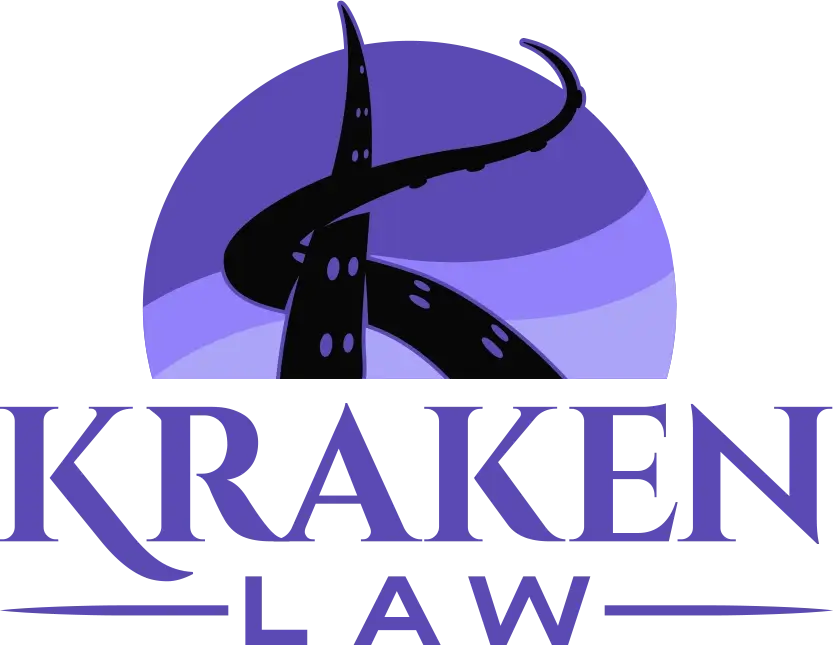The consumer goods market in the US will grow at a rate of 2.69% from 2024 to 2028. American citizens spend millions of dollars every year on purchases.
This is why many new brands and old companies are thriving. However, that does not mean every company is perfect. Many corporations have also lost profits due to product liability cases.
If you want to understand famous product liability cases, you’re on the right platform. Let’s look at how defective products can affect your purchases and lead to a product liability lawsuit.
What Constitutes A Product Liability Lawsuit?
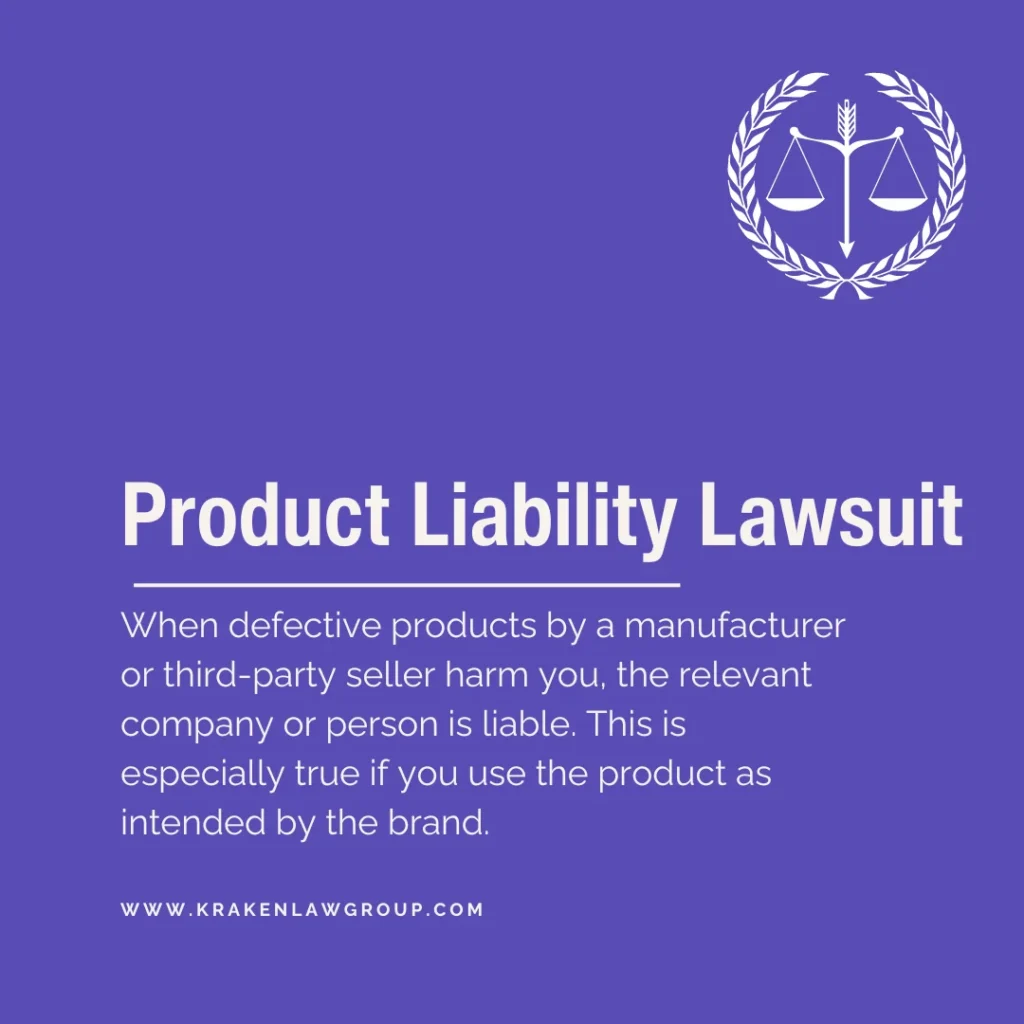
In 2022, 12.7 million people went to hospitals and clinics for treatment for injuries due to consumer items. This was the second consecutive year when defective products led to a significant number of injuries.
When defective products by a manufacturer or third-party seller harm you, the relevant company or person is liable. This is especially true if you use the product as intended by the brand.
If you’re due to a defect, lack of information about ingredients, or other faults, you can file a product liability lawsuit. This will allow you to seek compensation from the brand for your injuries.
Different laws regarding product liability and a lawyer’s advice will help you determine who should be held accountable. Typically, three people are usually involved in such cases:
- Manufacturers
- Designers
- Sellers
The court will determine which party was at fault and help you receive financial compensation from them. So whenever an entity’s product hurts you with no fault of yours, a product liability lawsuit can be filed.
Types Of Product Liability Cases
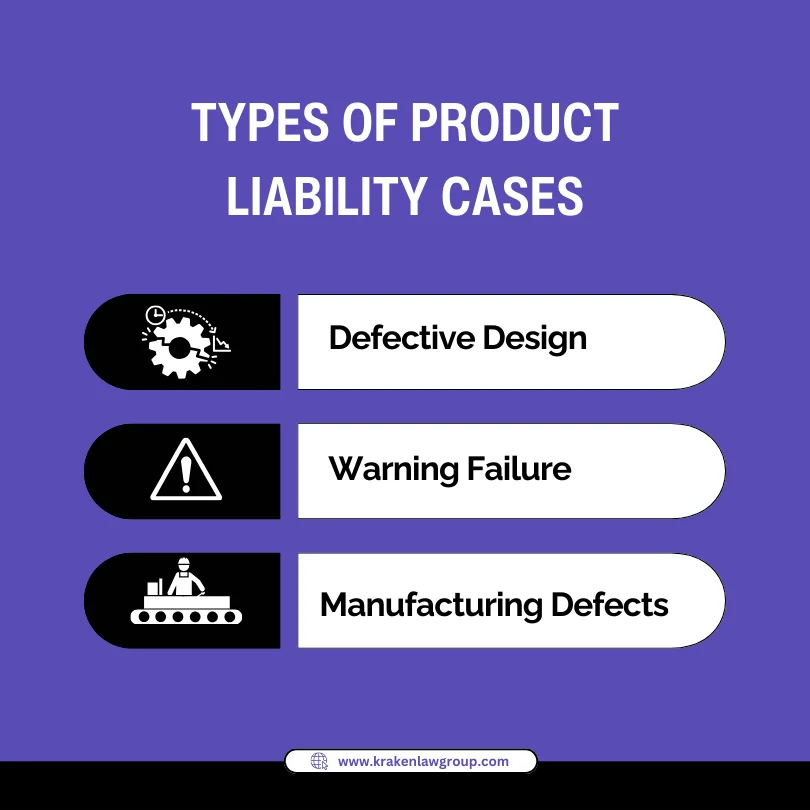
There are different types of product liability cases that you will encounter in life. Some may be due to design defects, while others may be due to operation malfunctioning.
Let’s look at the top three examples of product liability cases for a better understanding:
1. Defective Products Because Of Design
All product liability cases don’t involve manufacturing errors. Some claims are against the designers for defects or dangerous designs. Many of these product liability cases involve an entire collection of products instead of a single item.
A coffee maker with a design that sprays hot coffee on its users while transferring is a typical example of product liability. All coffee makers of that model may have such a problem due to the overall design. The hot liquid can give you minor to major third-degree burns.
This is why it is important for designers to create a product design that will offer convenience to users. Similarly, cars with poor design may roll over on roads more easily.
Accidents due to such vehicles also enable the users to file product liability cases. In these cases, the manufacturer follows the design ideas of the brand and brings the products to life.
So there would be no fault of the manufacturer if the design was imperfect. People can file product liability cases against the company or its designer.
2. Warning Or Instruction Failure For Proper Use
When filing product liability cases, people have to prove that they used the item as per its intended use. However, some brands may fail to offer adequate information about usage.
For example, they may not warn you about allergens in specific products. They may also not offer a manual on how to use the item correctly. So you can file product liability cases against the brand for lack of information.
Many people filing under this category claim that the danger was not apparent to them. They may also mention the brand did not mention any specific conditions in which the consumers should use specific precautions.
Here are some examples of warning and instruction failures:
- Brands selling car seats must mention specific conditions in which their seat may not protect the kid
- Sleeping pills without warning labels of potent side effects
- Toys without any label warning the consumer of its potential dangers
For example, if toys have lead content, you must warn the customers to ensure their children do not put such items in their mouths.
In such product liability cases, you will have to prove the injury occurred due to warning or instruction failures.
3. Defective Products Due To Manufacturing
Another example of product liability cases involves manufacturing defects. Manufacturing mistakes commonly occur in different industries. Many companies recall their defective products from the market to avoid lawsuits.
However, it is difficult to recall every defective item due to early sales. Some people also end up using the products. If they face any harm due to the defect, they are eligible to start product liability cases.
Some common examples of defective products include:
- Falling of an elevator due to a faulty pulley system
- Cars with missing steering or gear parts
- Bicycles with defective steering bars
- Toys for minors containing excessive amounts of lead
Many defective products can lead to accidents and injuries. Children who use lead toys may also suffer from poisoning.
Whatever the cause of your injury, you can file product liability cases against the manufacturer for compensation.
Top 9 Famous Product Liability Cases
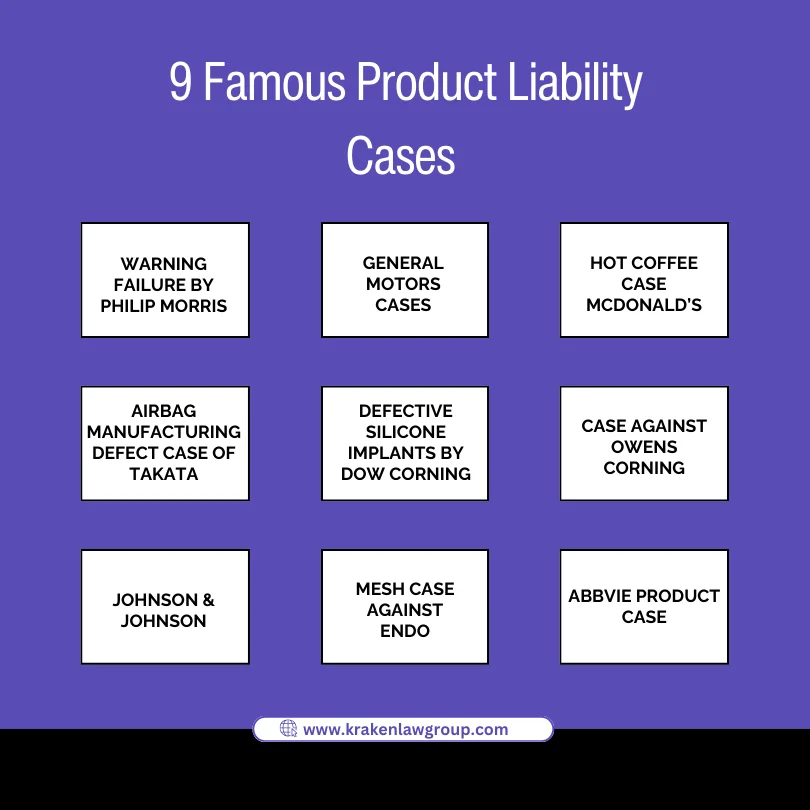
Many people believe that big brands don’t make defective products. That is not true. Below are the most famous product liability cases to help you understand how common these claims are:
1. Warning Failure By Philip Morris
Philip Morris is a renowned company of tobacco products that is now known as Altria Group. A Missouri resident started a product liability case against the company in 2002. Betty Bullock claimed that the company failed to warn on the package about smoking risks.
Due to a lack of information, she became a smoking addict and got a diagnosis of lung cancer back then. She also gave information about a misrepresenting campaign held by the company. This campaign hid the dangers of cigarette smoking.
Betty won the case with the court ordering Philip Morris to pay her $850,000 in compensatory damages. It also awarded her a punitive damages settlement amounting to $28 billion.
However, the company did appeal nine years later after which the amount was reduced to $28 million. Despite that, this is one of the top examples of product liability cases in the tobacco industry.
It was also one of the first cases in which a single plaintiff was awarded such a high settlement amount.
2. Product Liability Cases Against General Motors
General Motors (GM) is a famous American automotive company with brands such as Chevrolet under it. The company has faced many product liability cases in different categories.
This is why purchasing their vehicles may not offer you reliability. Here are the top examples of product liability cases against GM:
a) Damaging Coolant
About 35 million customers of GM started a class-action product liability lawsuit in 2008. The plaintiffs claimed that the Dex-Cool coolant that the company uses had a damaging ingredient. Some said the chemical damaged the engines of their cars.
Others claimed the chemical caused the formation of a rusty mixture that led to radiator overheating problems. The overall suit value was calculated to be about $150 million.
However, the company settled by reimbursing customers for repairs caused due to the coolant. The payments varied from $50 to $800, depending on each consumer’s damages.
The company’s spokesperson also reported to the media that GM did not do anything wrong. He also said the company only settled the lawsuit to reduce its overall legal expenses. That is because the case may have gone on for years.
b) Defective Ignition Switch
In 2014, GM recalled about 2.6 million cars due to faulty ignition switch issues. However, that is not the end of the story. People thought that this discovery was recent and GM took immediate action.
However, cases in court have been filed from 2000 to 2004 claiming that GM sold cars with faulty switches. The vehicle’s engines would shut down on roads due to the defect.
This problem also led to more than 124 deaths. More than 300 people also had to go to hospitals due to injuries. An attorney found out about GM’s improper handling of faulty ignition switches.
The company hid the defect by changing new switches but keeping their part numbers the same as the old ones. In recent years the company was caught and had to pay $900 million compensation.
c) Defective Gas Tank
Another product liability lawsuit involving General Motors is of defective gas tanks. This case is also one of the largest rewarding product liability cases.
In 1999, personal injury and product liability cases against GM began. The lawsuit stated that the company sold a 1979 Chevrolet Malibu with faulty gas tanks. This led to explosions which burned six people when their cars hit.
The plaintiffs filed for punitive damages amounting to $4.9 billion. What’s so interesting is that they also gave solid evidence of GM’s awareness of the problem. Proof of their neglect to resolve the issue was also given.
A jury of 12 members gave GM the order to pay $107.6 million in compensatory damages. The company also had to give $4.8 billion in punitive damages.
3. Hot Coffee Case McDonald’s
McDonald’s is famous for its burgers and piping hot coffee. This is why one would have never thought the chain would get into trouble for serving hot drinks.
This 20th-century case became viral on social media in 2011 and also has a documentary on it. Stella Liebeck, a 79-year-old was the plaintiff of the hot coffee case against McDonald’s in 1992.
She got a cup of coffee from the fast food joint with her grandson. When the car was stationary, Stella thought of adding cream and sweeteners to her coffee. To remove the lid, she pulled the cover’s far side.
However, the coffee fell onto her lap leading to severe third-degree burns. Stella had to be in the hospital for eight days and also had to undergo a skin grafting process.
Partial disability of two years and permanent pelvis disfigurement led to Stella starting a case of failure to warn against McDonald’s. The case went on for years, eventually leading to Liebeck receiving a settlement of $640,000.
The original appeal value was $2.8 million, but McDonald’s didn’t admit fault for years.
4. Airbag Manufacturing Defect Case Of Takata
Takata is one of the top companies that come to mind when thinking of airbag product liability cases. The manufacturer did a huge recall in 2014 due to a defect.
The company’s defective airbags have led to more than 16 deaths and injuries surpassing the count of a hundred. This company had been manufacturing faulty airbags since the 2000s.
As per reports, the inflators within the airbags would rupture upon impact. This led to metal fragments flying away from the steering and hurting the people in cars. The worst part is that the manufacturer knew about the issue for about a decade before it made recalls.
Two former employees of the company also took 50 airbags from scrapyards to perform tests for defects in 2004. They found out about the problem and engineers began to develop solutions. This is because they were anticipating a recall.
Takata pleaded guilty a few years ago in the airbag manufacturing product liability cases. The company had to pay the following compensations:
- Criminal penalties – $1 billion
- Restitution – $975 million
- Fine – $25 million
Due to the burden of these charges, Takata went bankrupt in 2017.
5. Defective Silicone Implants By Dow Corning
The Dow Chemical Co and Corning had a joint venture of developing silicone breast implants in the late 90s. A class action product liability lawsuit involving 170,000 plaintiffs was made against the companies.
From the late 1970s, women who got silicone breast implants in this venture had complaints of rupture, leakage, and illnesses. Other issues these women were facing at that time were:
- Body damage
- Injuries
- Scleroderma
- Other health risks
The company’s implants had several risks and production issues. Dow Corning knew about this according to evidence, but didn’t take any action.
Problems with the implants led to the venture facing more than 20,000 product liability cases. A jury also found Dow Corning guilty of the alleged crimes.
It was proven that the company purposely hid risk factors from its end consumers. This is why Dow Corning had to pay $3.2 billion overall to settle the different lawsuits.
Each plaintiff got between $12,000 to $60,000 as the payout. The company also had to pay $5,000 to women who wanted to remove their implants. Meanwhile, $25,000 was given to plaintiffs with rupture complaints.
6. Dangerous Building Materials Usage Case Against Owens Corning
In the late 20th century, deaths due to asbestos were common because of usage in various products. Owens Corning is one of the leading insulation companies that uses this mineral in its building materials.
This is why the company had to face various product liability cases. Overall, 176,000 people were involved in the lawsuit. They had a claim that the building materials of Owens Corning led to them receiving a diagnosis of mesothelioma cancer.
Some people also lost loved ones due to the use of asbestos. The lawsuit became bigger with time involving 237,000 claims. The court told Owens Corning to pay $1.2 billion.
The company had to file for bankruptcy because of the overwhelming debt.
7. Product Liability Cases Involving Johnson & Johnson
Johnson & Johnson is a household name for baby care products. However, this company’s items are not the best choice for your infants.
The company has faced more than 38,000 product liability cases since its inception. Here are a few examples to help you understand the risks of using the products of Johnson & Johnson.
a) Faulty Talcum Powder Case
The case of Martinez against Johnson & Johnson is the top example of a product liability lawsuit involving talcum powder. Cecilia Martinez was the namesake plaintiff of this case.
About 22 victims joined the suit to seek justice. The primary complaint was that the talcum powder was causing ovarian cancer in regular female users of the product.
The company was using asbestos in its powder leading to greater risk and diagnosis of ovarian cancer. As per the jury, Johnson & Johnson had to pay $4.14 billion in punitive damages.
Every plaintiff in the lawsuit got about $25 million. This case is just one of the examples of faulty talcum powder by Johnson & Johnson. The company has been in other lawsuits regarding the same core complaint.
b) Deceptive Marketing Lawsuit
Johnson & Johnson is also famous for selling healthcare products other than baby care items. The company is known for distributing Risperdal. This is an antipsychotic drug which led to the brand facing a lawsuit in 2019.
The main allegation was deceptive marketing by the brand. Male victims were the primary plaintiffs of the case with complaints of gynecomastia after using the drug. This is a condition that causes the growth of breast tissue in males.
Treating Autism symptoms was the main purpose of Risperdal. However, the company did false marketing of the drug as per the lawsuit. The plaintiffs also had a claim of warning failure of side effects by the brand.
All these claims were proven through evidence, which led to a jury verdict in favor of the plaintiffs. Johnson & Johnson had to pay the victims overall $8 billion in damages.
c) Opioid Crisis
One of the most significant cases against Johnson & Johnson was the opioid crisis lawsuit in late 2019. Many states have filed cases against the company for its role in selling pain medications over the years.
Some also included the marketing of opioid pain medications in their product liability cases. However, the 2019 case was the first time the company was held accountable for the opioid crisis.
A judge in Oklahoma gave a verdict in favor of the plaintiffs. Johnson & Johnson had to initially pay $572 million in damages. However, the amount was reduced to $465 million later.
8. Faulty Transvaginal Mesh Case Against Endo
There have been many transvaginal mesh cases with the time, but the very first one that went to court was the 2012 case. It was against a manufacturing company known as Endo.
The product liability lawsuit had more than 100,000 plaintiffs. A transvaginal mesh is mainly an implant for treating pelvic prolapse. It is also helpful for treating incontinence due to stress.
A well-made product relieves users of pain and worries. However, Endo’s mesh did the opposite. Women who got the implant suffered from severe side effects such as:
- Scarring of vagina
- Fistulas
- Excessive pain
The primary complaint in the case was that the manufacturer did not do proper testing. This is why they did not warn them of the dangers of the implant.
Because of the lawsuit the company had to pay $1.5 billion in compensation over the following years. In 2017, Endo also agreed to pay about $775 million to resolve 22,000 other claims.
9. Misrepresentation Of Risks By AbbVie
AbbVie is the 6th largest biomedical company by revenue in the US. Before achieving this milestone, the brand has come across many lawsuits. This is especially true regarding its Androgel.
Thousands of lawsuits against the company were pending until a few years ago. The plaintiff’s complaint of misrepresentation of safety risks of the brand’s gel. So a federal jury gave the order of a $150 million settlement in punitive damages.
The primary plaintiff Jesse Mitchell had a claim of suffering from a cardiac arrest due to the gel’s side effects. Unfortunately, he did not receive any compensatory damages for the heart attack.
Besides this lawsuit, AbbVie has been facing many other lawsuits in different states regarding its testosterone products. The company does not mention the risks of using different gels and items for male consumers.
Of course, not every case has come to a verdict yet. However, this lawsuit remains famous due to the favorable outcome.
How Much Time Do You Have To File A Product Liability Lawsuit?
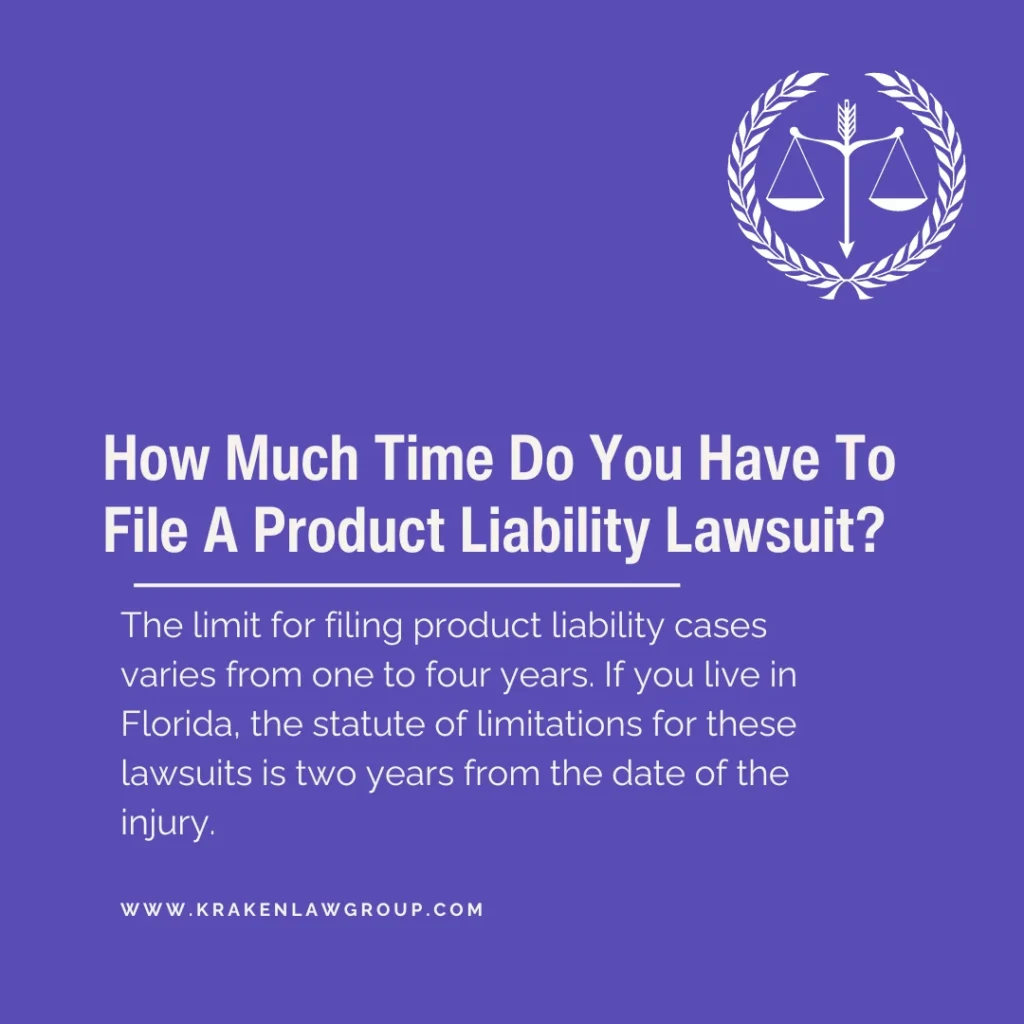
The limit for filing product liability cases varies from one to four years. If you live in Florida, the statute of limitations for these lawsuits is two years from the date of the injury.
That is because negligence and personal injury are two primary elements of product liability cases. If you fail to act within two years, you will lose your light to start a case against the manufacturer, designer, or seller.
Wrongful death due to product liability also has a limit of two years from the day of death. However, some product liability cases may benefit from exceptions.
For example, the onset of your injury was gradual and happened days after the purchase or usage of the product. The Statute of Repose is 12 years from the day of injury.
So if your condition develops after three years, you may still have a chance to file a product liability lawsuit.
Top Types Of Compensation You Can Receive From Product Liability Claims
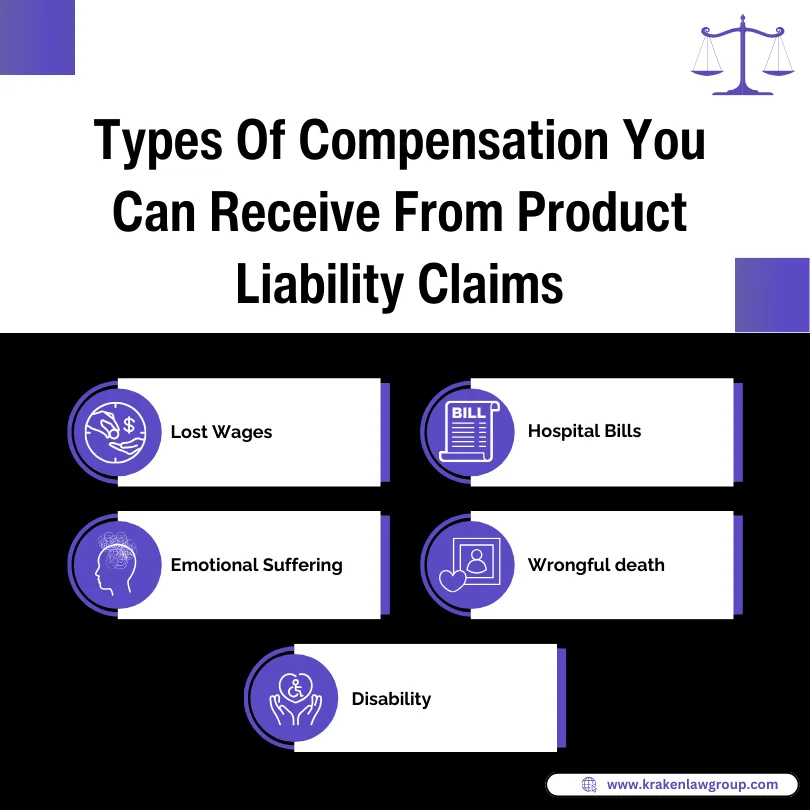
You can receive compensation for different types of personal injury damages in product liability cases. The exact type will depend on the conditions of your claim.
This is because some people face disabilities due to defective products, while others may face minor scratches. People also lose their loved ones due to product liability incidents.
Following are the top types of compensation you can receive:
- Medical fees
- Loss of salary
- Pain compensation
- Suffering compensation
- Emotional trauma
- Permanent disabilities
- Disfigurement
- Wrongful death
In cases of wrongful death, you can file a claim on behalf of the loved one you lost. This can help you recover from the hospital bills and loss of income left by the person.
Who Can You Sue When Filing A Product Liability Lawsuit?
You can file a case against anyone who has been actively participating in the manufacturing, designing, sale, and distribution of the product. For example, you may sue a manufacturer for developing a defective item.
It is also possible to file a case against manufacturers who develop different parts of a specific item. Other people you can sue for product liability are:
- The company or person that assembles different manufactured parts of a product
- The service provider or individual who installs a product for you
- Wholesale sellers
- Merchants
Strict liability rules are only applicable to sellers and merchants who sell goods to people regularly. The main purpose of such laws is to protect non-commercial sellers from product liability claims.
For example, if you buy a car seat from a stranger on Instagram and it has defects, you cannot file a case against that person under strict liability.
FAQs
How To Avoid A Product Liability Lawsuit?
The best way to avoid a product liability lawsuit is by performing tests and quality checks. This will help in the understanding of the product’s safety.
What Is An Example Of Product Liability?
A prime example of product liability cases is medicine manufacturers failing to warn end consumers about side effects.
It is important for dosage risks and specific side effects to be mentioned in product packaging or label.
If no warning has been given to consumers, the manufacturer can be held liable.
How Do You Prove A Product Liability Case?
You must hire a lawyer who can investigate the case to collect proof and ensure your claim will be significant in court. It will be essential to provide evidence that the product was behind the cause of your injury.
Another thing you must prove is that you used the product as per its intended use.
What Is The Difference Between Product Liability And Strict Liability?
In product liability, you only have to prove the item was defective leading to your injuries. You may also offer evidence of another party’s negligence leading to the claim.
Meanwhile, in strict claims, you must prove you used the item according to its labeled use regardless of the defect.
Final Words
These are the top famous product liability cases in the US. Such cases are prevalent in many countries, but the rate of defective products in the US is rising quickly.
Injuries due to design and other defects can vary from minor burns to permanent disfigurement. You also must have a lawyer beside you to tackle challenges.
If you’re suffering because of defective products, contact us to meet our lawyers for advice. We can help you file a product liability lawsuit and fight for your rightful compensation.


